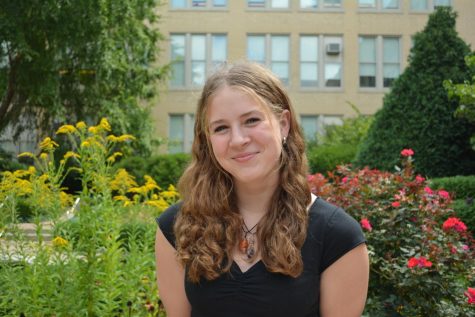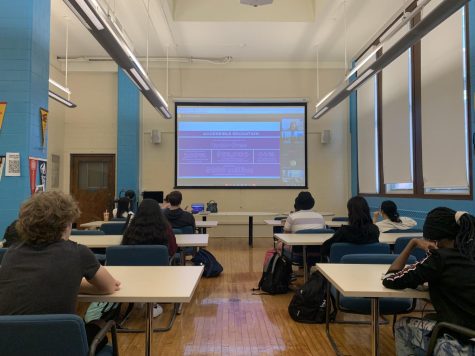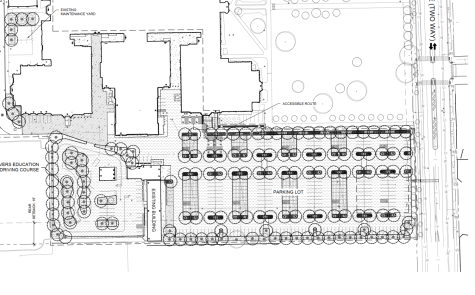Early Action applicants on the rise
November 17, 2022
Almost every senior at Lane Tech knows what happened Nov. 1. The Early Action (EA) deadline loomed over many seniors during the summer and in the first months of the school year as students completed applications for their colleges of choice.
This year, more seniors than ever are submitting their applications early, according to senior Brooke Anderson.
“Early Action has become a lot more popular, and it’s just normal to get all your applications done early now. It’s not just apply EA to where you really want to go, it’s apply EA to everywhere you’re applying,” Anderson said.
Senior Erin Edlund, who is applying to 6 schools EA and one school Regular Decision, has also seen a shift in the ratio between EA and Regular Decisions.
“I think that it’s a weird thing because it used to be a huge thing if you applied EA and then most of your schools would be regular [decision], but now it’s kind of reversed,” Edlund said.
This increase in early applications could correlate to a general increase in applications; according to a March 2022 common application report including data from 853 schools, the overall number of applications increased by 21.3% from the 2019-2020 season to 2021- 2022.
Students individually applying to more schools is one way to explain this growth as a 2022 EAB report corroborated; over the last seven years, there has been a steady increase in the number of applications per student.
This increased number of applications forces schools to be more selective in their admissions processes. According to ivywise and CBS news, college acceptance rates have dropped dramatically, to as low as 3.19% at some schools.
Senior Parker Craig has also noticed that colleges have become more selective.
“I think that they are getting more selective because so many people are applying through the Early Action portal, and all of these schools that used to be considered safeties or matches are becoming reaches,” Craig said.
A student usually exceeds the average academics of a safety school, while a match school’s averages closely match those of a prospective student.
Erin Driesbach, Lane’s college and career coach, said that the selectivity of schools motivates students to apply early.
“I think people are particularly driven to do Early Action for highly selective schools and even Early Decision as well,” said Dreisbach. “Last year with Tulane, all of our students who applied Early Decision to Tulane got in. Whereas nationally, they took 1% of their Regular Decision students. So it made a huge difference there to be doing Early Decision.” While EA applications allow a student to know earlier whether they have been accepted or denied to a school, an Early Decision application binds a student to attending the school if they get in, with the added bonus of finding out sooner.
Edlund said she hopes that by applying early, she will increase her chances of admittance into her colleges of choice.
“I think that since my probability of getting in through Regular Decision was possibly lower, I felt like I should show my initial interest through Early Action,” Edlund said.
Anderson also cited selective programs as a reason for her early application.
“I know a lot of them are very selective, like University of Wisconsin-Madison and University of Michigan have really good business programs, so it’s hard to get in those, so I hope with applying early, I’ll have a better chance of getting in,” Anderson said.
Another factor contributing to a preference for EA applications is students’ increased confidence in their applications due to new test-optional policies.
“Now that schools are going test optional, I think that students are more confident in themselves to apply what they know about themselves to Early Action programs, instead of just waiting until Regular Decision,” Edlund said.
According to the same EAB report, 15% of students said that they chose their college options specifically because they were test optional.
However, Driesbach said that test-optional policies could be causing an increase in early applications not because students are becoming more confident, but the opposite.
“I think we’re experiencing more uncertainty with test optionals. There’s just a lot more question marks out there, for sure” Driesbach said. “And so I think people are setting themselves up for the most success by trying to get those Early Action deadlines in just to give themselves the options.”
Edlund also said that uncertain students are trying to give themselves more options through EA.
“If you don’t know where you want to go or you don’t know what you want to do, it makes [the application process] even more difficult,” she said.
This difficult and often complex process creates uncertainty for seniors as they wait anxiously for decisions. Despite her Early Action application, Anderson isn’t sure she’ll get into all the colleges she applied to.
“There’s so many people applying, it’s very rigorous and you need so many extracurriculars, and I need more than a high GPA to get in,” Anderson said.






